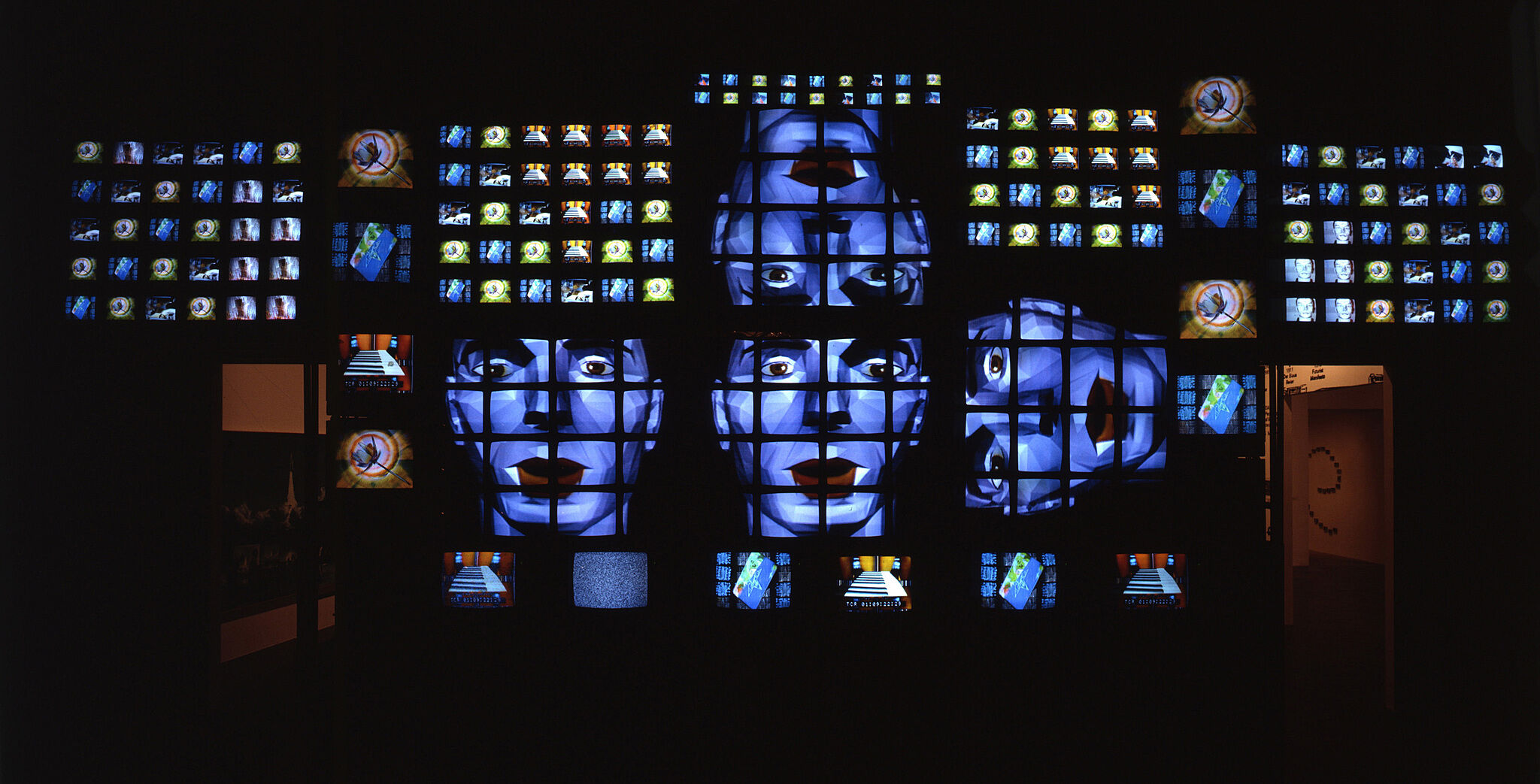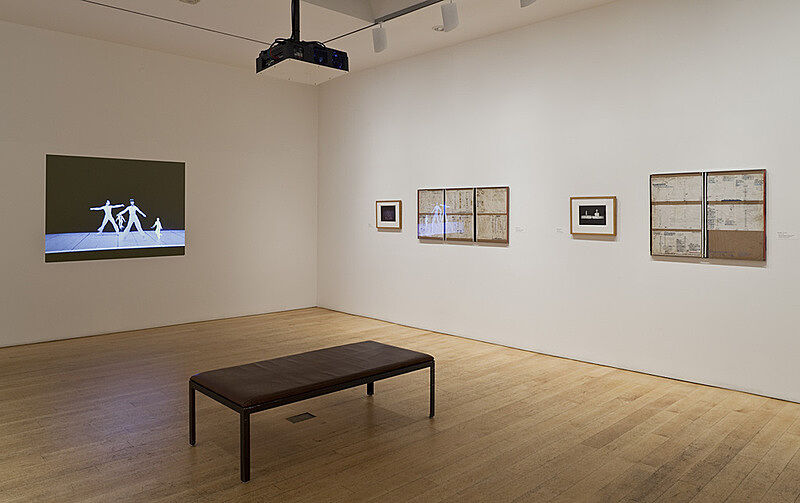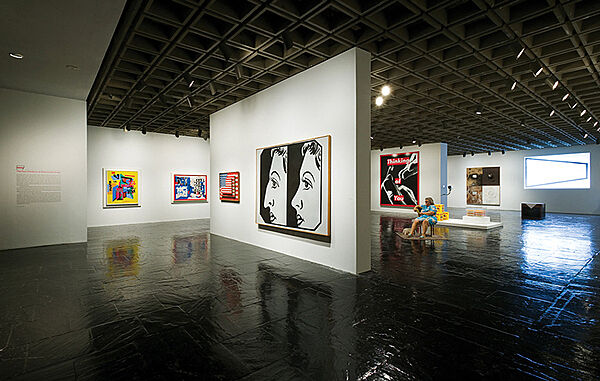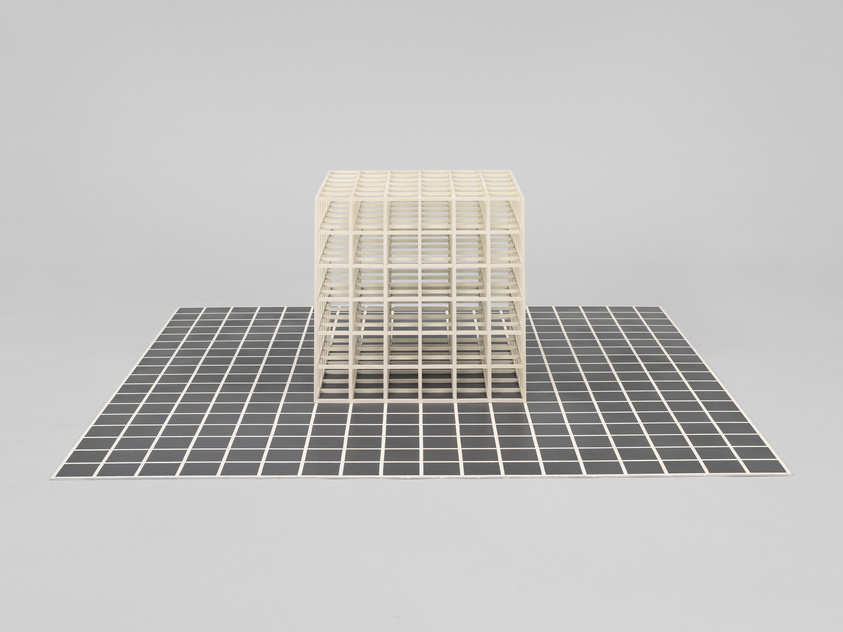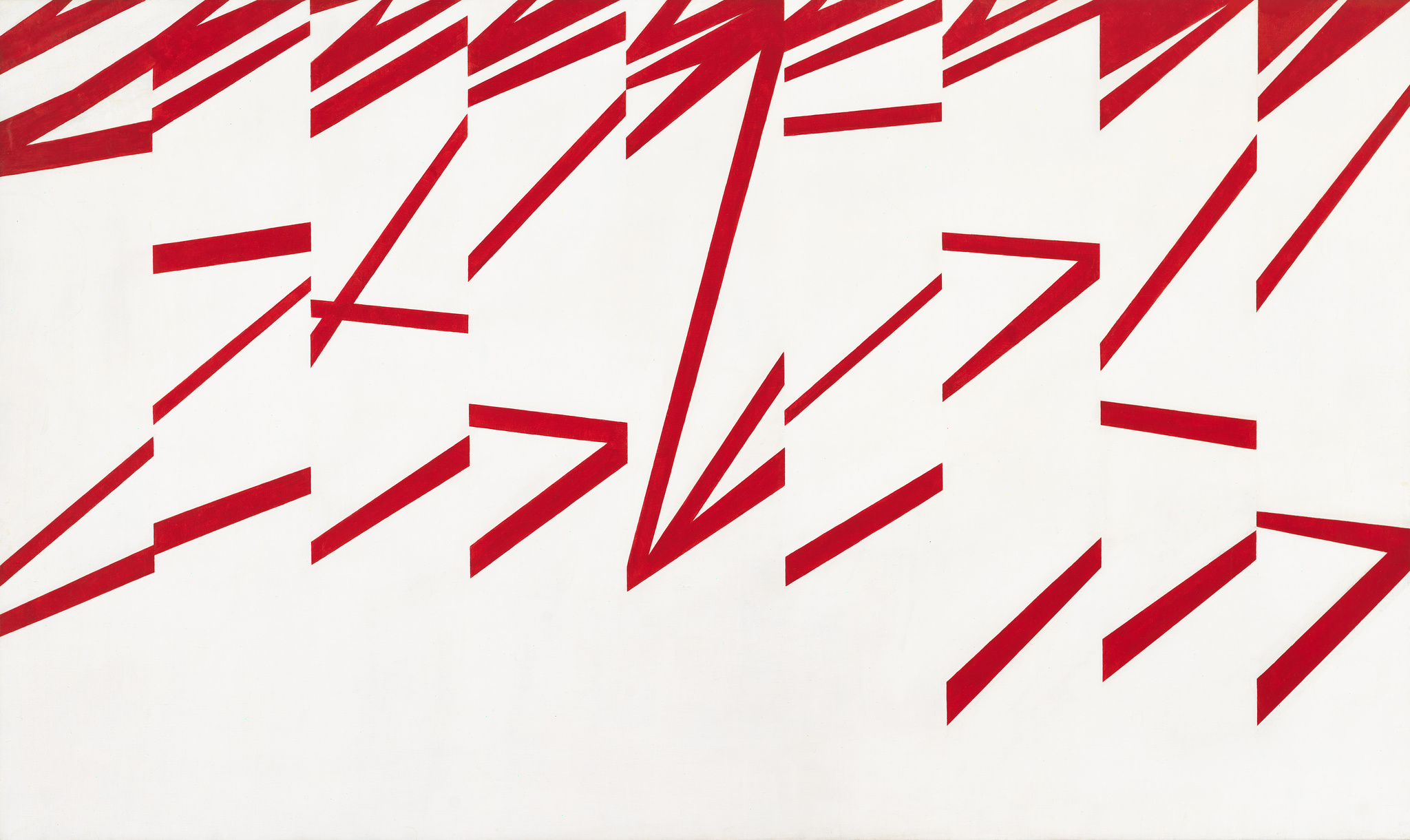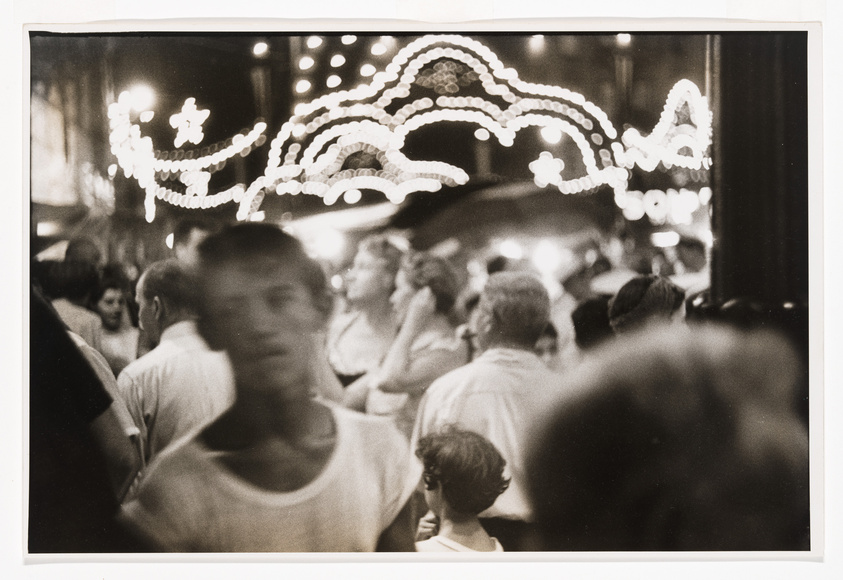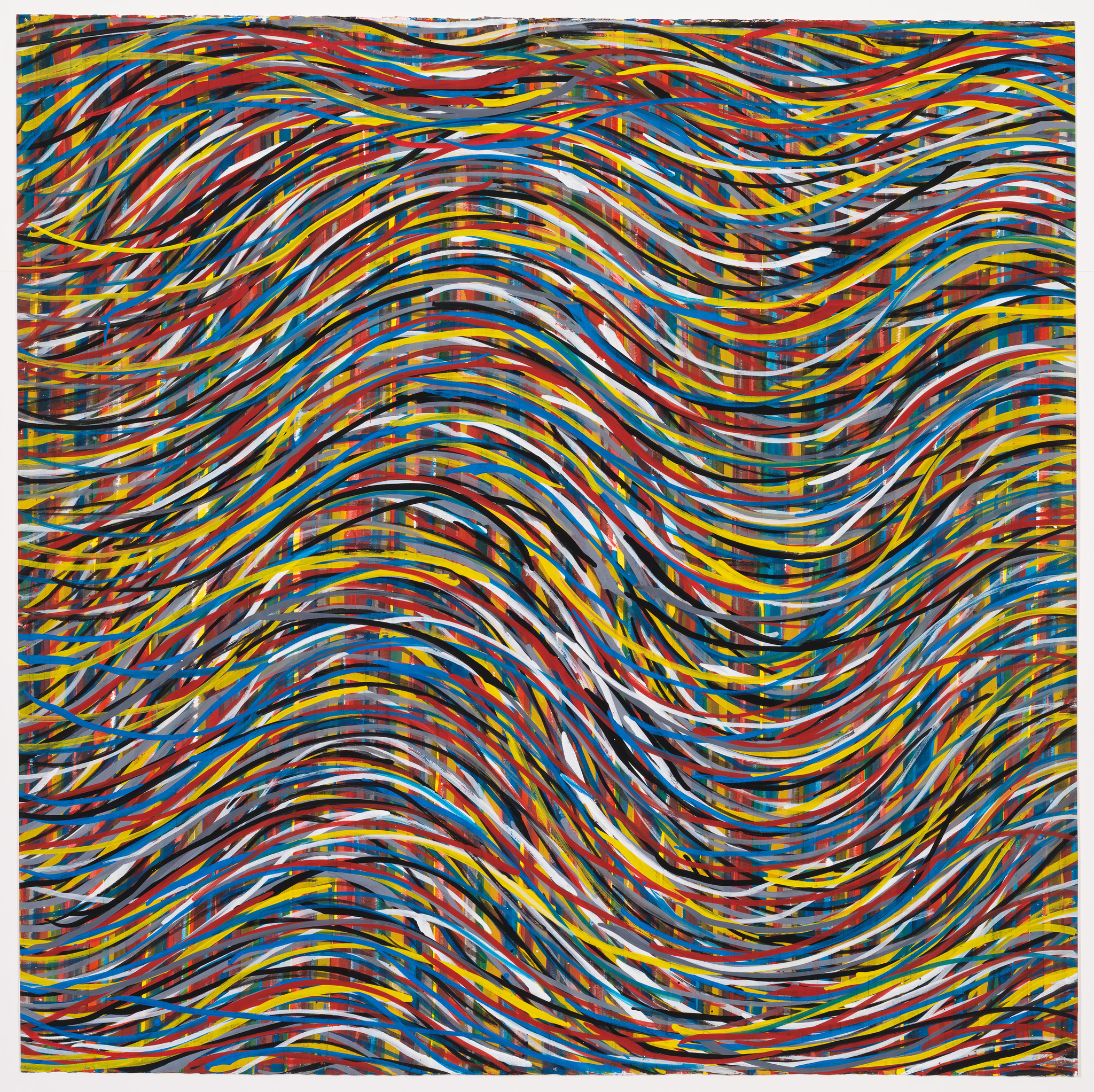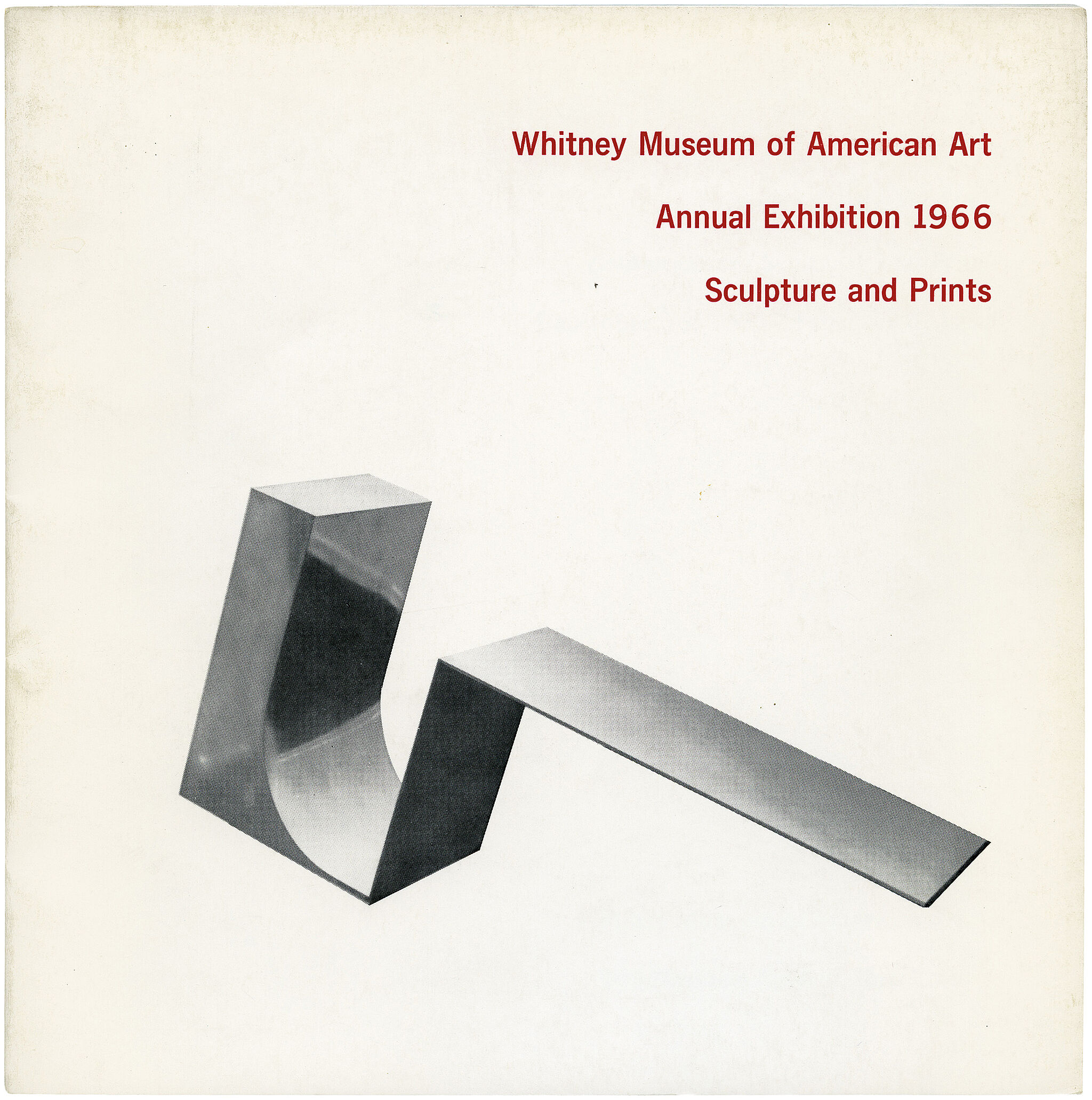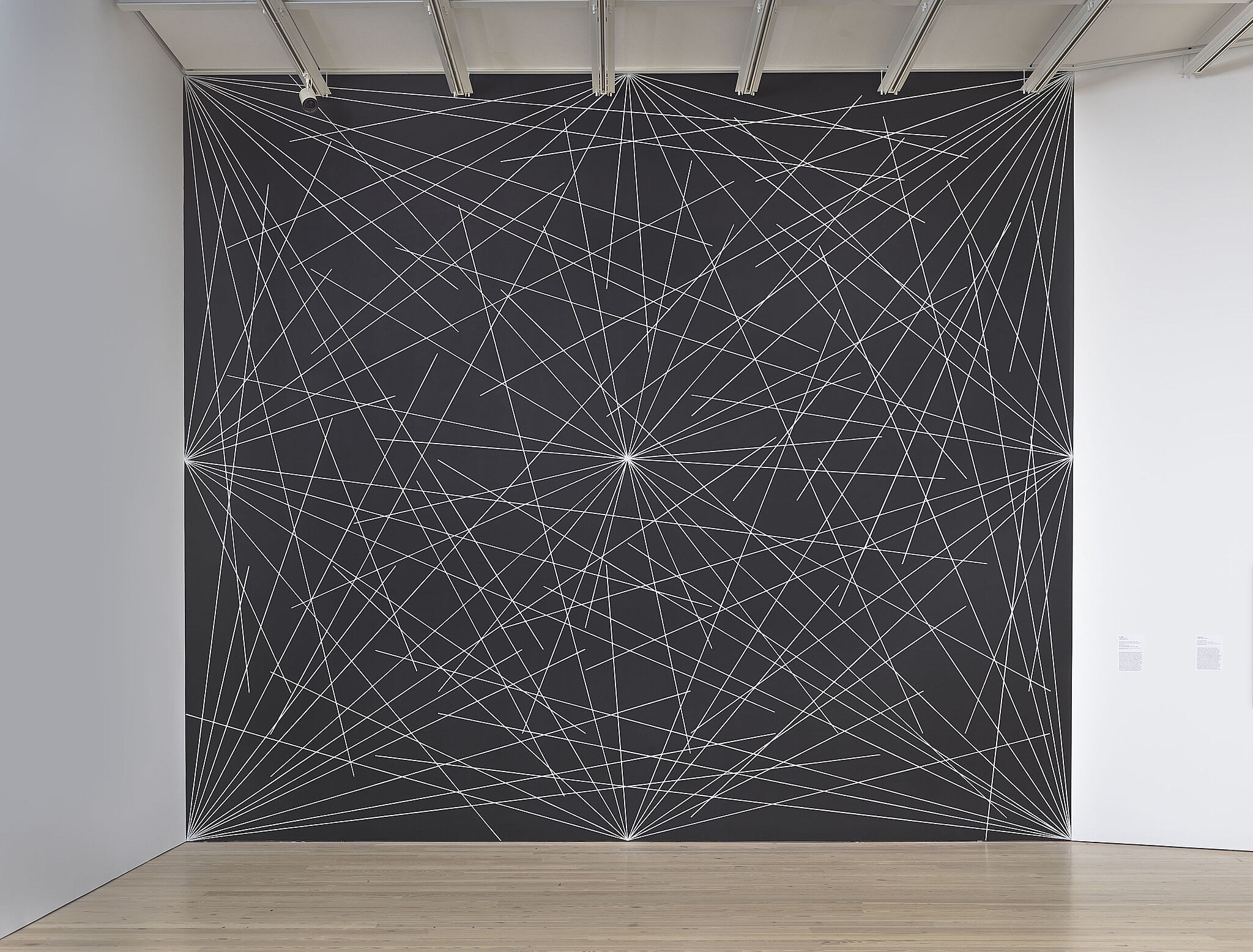Sol LeWitt
1928–2007
Over the course of five decades, Sol LeWitt explored a variety of mediums and scales while continually mining ideas he first developed in the early 1960s. Seeking to distinguish himself from the Abstract Expressionists, LeWitt determined that the initial concept, not the finished object, was the work of art. In a series of 1967 statements that outlined parameters for Conceptual art, the artist argued, “The idea becomes a machine that makes the art.”
In 1968 LeWitt sought to make a work that was “as two-dimensional as possible,” and he achieved this flatness literally by sketching directly onto a gallery wall. During the next forty years he conceived of more than 1,200 wall drawings. Accompanying instructions allow other artists and even amateurs to execute the works in different locations. LeWitt saw the wall drawings as the equivalent of musical scores that could be realized by any number of people in any location, and his instructions often allow for subtle interpretive differences. For Wall Drawing #289, the artist instructs drafters to draw lines in white crayon charted on a six-inch graphite grid that overlays one to four painted black walls.
LeWitt’s three-dimensional works, or “structures,” are based on the unit of an open rather than solid cube, peeling away what he perceived as the decorative skin on traditional sculpture. Though he created these structures in a range of scales, LeWitt maintained the ratio 1:8.5 for each unit (the empty space is 8.5 times the width of the wood or metal edge). Five Towers, a later, more complex structure, rises more than seven feet in height, culminating in four towers on each edge of its square form, with a fifth tower in the center.
Introduction
Solomon "Sol" LeWitt (September 9, 1928 – April 8, 2007) was an American artist linked to various movements, including conceptual art and minimalism.
LeWitt came to fame in the late 1960s with his wall drawings and "structures" (a term he preferred to "sculptures") but was prolific in a wide range of media including drawing, printmaking, photography, painting, installation, and artist's books. He has been the subject of hundreds of solo exhibitions in museums and galleries around the world since 1965. The first biography of the artist, Sol LeWitt: A Life of Ideas, by Lary Bloom, was published by Wesleyan University Press in the spring of 2019.
Wikidata identifier
Q168587
Information from Wikipedia, made available under the Creative Commons Attribution-ShareAlike License . Accessed November 23, 2025.
Introduction
LeWitt moved from Minimalism to Conceptual art in the 1970s often stressing theory over execution, employing systems to govern the artistic process, that most often result in large-scale wall drawings.
Country of birth
United States
Roles
Artist, collagist, conceptual artist, graphic artist, muralist, painter, photographer, sculptor
ULAN identifier
500115429
Names
Sol LeWitt, Sol Le Witt, Sol Lewitt
Information from the Getty Research Institute's Union List of Artist Names ® (ULAN), made available under the ODC Attribution License. Accessed November 23, 2025.

